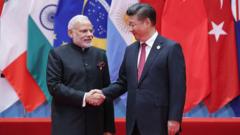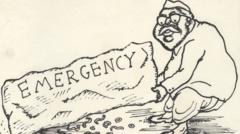As India crosses the mark of 1.45 billion people, recent calls from leaders in southern states like Andhra Pradesh and Tamil Nadu have reignited discussions around increasing birth rates. Facing declining fertility rates and an aging population, these states are considering incentives to encourage families to have more children. With fertility rates plummeting from 5.7 births per woman in 1950 to just two today, much of the concern centers around the potential loss of electoral representation and federal funds amid an upcoming delimitation process. The economic implications of a rapidly aging society are exacerbated by the current low birth rates, raising questions on the ability of states to support elderly care. While some nationalist leaders urge higher birth rates, experts warn that encouraging larger families might not be a viable solution given the underlying societal changes. As India grapples with these demographic shifts, the key lies in strategic planning for healthcare and social infrastructure to support an aging populace.
India's Population Dilemma: A Push for More Children Amidst Declining Birth Rates

India's Population Dilemma: A Push for More Children Amidst Declining Birth Rates
India's leaders are advocating for higher birth rates despite already being the world's most populous nation, citing concerns over aging demographics.
As India crosses the mark of 1.45 billion people, recent calls from leaders in southern states like Andhra Pradesh and Tamil Nadu have reignited discussions around increasing birth rates. Facing declining fertility rates and an aging population, these states are considering incentives to encourage families to have more children. With fertility rates plummeting from 5.7 births per woman in 1950 to just two today, much of the concern centers around the potential loss of electoral representation and federal funds amid an upcoming delimitation process. The economic implications of a rapidly aging society are exacerbated by the current low birth rates, raising questions on the ability of states to support elderly care. While some nationalist leaders urge higher birth rates, experts warn that encouraging larger families might not be a viable solution given the underlying societal changes. As India grapples with these demographic shifts, the key lies in strategic planning for healthcare and social infrastructure to support an aging populace.




















